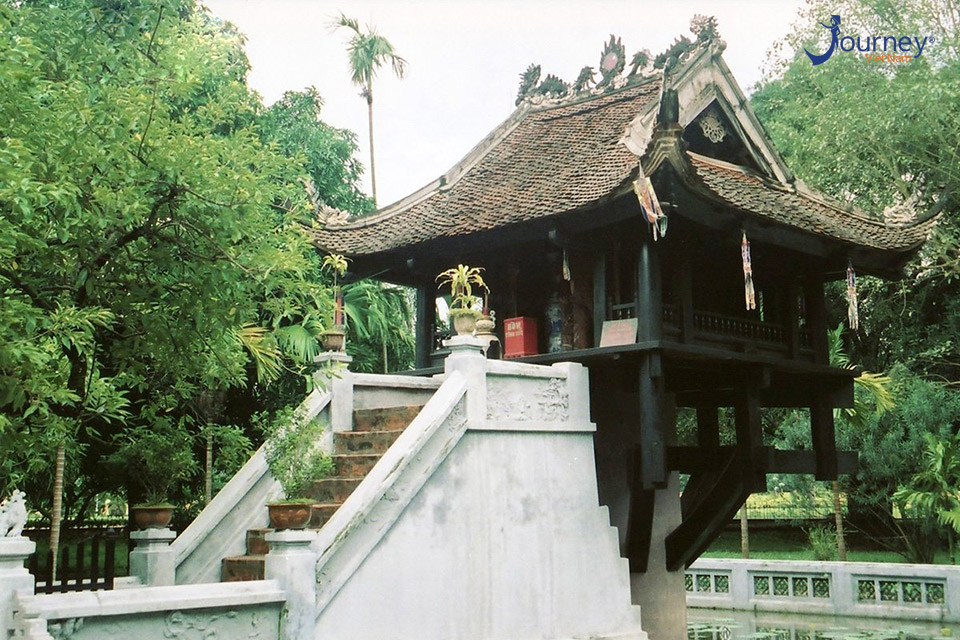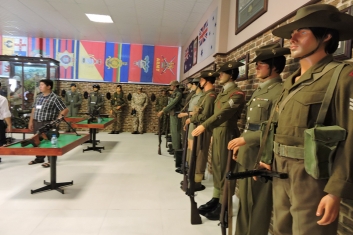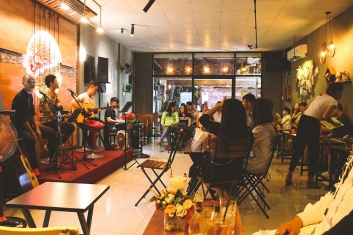![]() Vietnam Travel Guide
Vietnam Travel Guide
Chua Mot Cot – A Thousand Years Old Lotus Of Hanoi Capital
Chua Mot Cot (One Pillar Pagoda) is located at Ba Dinh district, the center of Hanoi (on the right side of Ho Chi Minh Mausoleum). The pagoda is a symbol of Hanoi capital and two most iconic temples because of the history and unique architecture, shaped like a stylized lotus rising from the water. It is one of the Best destination in Vietnam that many domestic and foreign tourists cannot miss when booking Hanoi City Tour.

The history
Chua mot cot was built under the Reign of Emperor Ly Thai Tong of Ly dynasty, who ruled from 1028 to 1054, basing on his dream and the suggestion of the monk Thien Tue in 1049. According to court records, Ly Thai Tong was childless and dreamed that he met the bodhisattva Avalokiteshvara
who was handing him a baby while seated on a lotus flower. When he woke up, the King told the story and was advised to build the pagoda wich one stone pillar in the middle of a square lotus pond, similar to the one he saw in the dream, by the monk Thien Tue. Not long after, the queen bore him a son. Before the pagoda was opened, the monks had gone around the pagoda and prayed for the longevity of the monarch, therefore the pagoda is as known as Dien Huu Tu (meaning “long blessing”).
The temple was restored by the King Ly Nhan Tong in 1105 and he gave a large copper bell casting to hang at the temple called “Giac The Chung – The Ultimate Enlightenment” (meaning “bell wake up people”). It’s one of four major capital works of Vietnamese feudatory. However, the bell was too large and heavy, therefore it could not be installed inside the temple. Then, they left it on the ground in the farmland of Nhat Tru Pagoda at Hoa Lu (Ninh Binh Vietnam). This land was widely inhabited by turtles, so the bell was named “Chuong Quy Dien” (Bell of the Turtle Farmland). At the beginning of 15th century, Vietnam was invaded and occupied by the Ming Dynasty of China. The enemy smelted this copper bell for manufacturing weapons.
In 1954, the French troops destroyed the pagoda before withdrawing from Vietnam on the night of September 10, after the First Indochina War. After the day of taking over the capital (10/10/1954), the Ministry of Culture had a large restoration of One Pillar Pagoda.
The temple is a place for organizing the religious activities and annual ceremony on the occasion of Vesak – the birthday of the Gautama Buddha. It attracted many monks and Buddhists all over the country each year.
The architectural features
The temple is built of wood on a single stone pillar 1.25 m in diameter and 4 m in height in the middle of the square pond. It is designed to resemble a lotus blossom, which is a Buddhist symbol of purity. Lotus flowers’ roots are in the muddy water, but they rise above the mud to bloom, clean and fragrant.
Inside the temple is sat a statue of the bodhisattva Avalokiteshvara. On the tile roof with four corners bend is a statue of two dragons looking at the moon. In the Vietnamese conception, the dragon is always a sacred animal, symbolizing power. Thus, this image represents human values, intellectual reflection, human desires of Vietnamese ancient civilization.
In the temple garden, there is a Bodhi Tree from the Buddhistic land, given by President Rajendra Prasad on the occasion of President Ho Chi Minh’s visit to India in 1958.
Over nearly a thousand history line, the Asian Record Association has set the Asian record: “The unique architectural temple” for the One Pillar Pagoda, on October 10, 2012. Taking Vietnam Private Tour, you will have a chance to admire the One Pillar Pagoda – National Historic-Artistic Monument of Vietnam.
Our products: Sapa Vietnam Tours, Halong Bay Cruises, Halong Bay Day Tour, Vietnam package Tours.
Copyright © 2016 Journey Vietnam.









